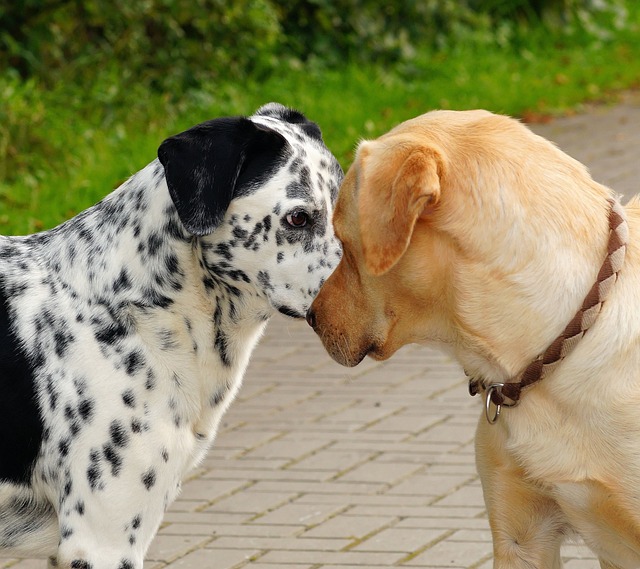Introduction
As the summer sun blazes, our furry companions become vulnerable to heat-related issues, including the discomforting condition known as heat rash. This article provides insights into the causes, symptoms, and effective methods to prevent and treat heat rash, ensuring our dogs remain cool, comfortable, and free from this skin ailment during hot weather.
What Is Heat Rash in Dogs?
Heat rash, akin to human “prickly heat,” arises when dogs become overheated in hot and humid conditions. Unlike humans, dogs primarily cool off by panting, which becomes less effective in intense heat. As a dog’s body temperature rises, it can lead to irritation, inflammation, and the development of small bumps or blisters—a condition known as heat rash.
Recognizing Symptoms
- Redness, possibly blotchy
- Bumps, blisters, sores, or scabs
- Tenderness
- Itchiness
- Hair loss
Heat rash predominantly manifests in areas with thicker fur or increased friction, such as the armpits, groin, neck, and under the chin. In severe cases, hair loss may occur. Dogs may display signs of discomfort, including excessive scratching or licking.
Causes of Heat Rash in Dogs
Heat rash most commonly occurs during hot and humid weather when dogs struggle to regulate their body temperature efficiently. Factors contributing to heat rash include:
- Poorly ventilated or confined spaces
- Overexertion or prolonged exercise in high temperatures
- Dense coats or skin folds leading to trapped heat and moisture
- Brachycephalic (flat-faced) breeds being more susceptible
Consulting a veterinarian for accurate diagnosis and tailored treatment is crucial if you suspect your dog has heat rash or any other skin condition.
Diagnosing Heat Rash in Dogs
Veterinarians employ a combination of physical examination, medical history, and sometimes additional tests to diagnose heat rash. They will assess the dog’s skin, inquire about recent activities and exposure to hot environments, and note any behavioral changes or signs of discomfort. This process helps rule out other potential skin conditions, ensuring an accurate diagnosis.
Effective Treatment Methods
Prompt action is imperative if you suspect heat rash or heat exhaustion. Begin by moving your dog to a cool, well-ventilated area and contact your vet. Apply a cool compress or damp towel to soothe the affected areas, avoiding direct application of ice. Keep the area clean and dry to prevent further irritation. Your vet may recommend topical creams, ointments, or sprays to alleviate itching and promote healing. In severe cases, oral medications like corticosteroids or antibiotics may be prescribed.
Preventing Self-Inflicted Damage
To prevent exacerbating the condition, use an Elizabethan collar or a T-shirt to prevent your dog from licking or scratching the affected areas. Avoid exposing your dog to hot and humid conditions that may worsen the rash.
Prognosis for Dogs With Heat Rash
With prompt diagnosis and treatment, the prognosis for dogs with heat rash is generally good. However, the severity of the condition and underlying factors may influence the outcome. Dogs with predisposing factors like thick coats or skin folds may be more prone to recurrent heat rash, necessitating ongoing management and preventive measures.
Preventing Heat Rash in Dogs
Proactive measures play a pivotal role in keeping dogs cool and minimizing exposure to hot and humid conditions:
- Provide access to shaded areas and ensure proper ventilation
- Schedule walks and playtime during cooler parts of the day
- Supervise outdoor activities and offer cooling accessories if needed
- Regular grooming, especially for dogs with dense coats or prone to matting, is essential.
By adopting these preventive measures and remaining vigilant, you can safeguard your dog from heat rash and other heat-related issues. Remember, early prevention is the key to ensuring your dog’s comfort, health, and safety during hot weather.
Understanding, Treating, and Preventing Heat Rash in Dogs”
Introduction
As the summer sun blazes, our furry companions become vulnerable to heat-related issues, including the discomforting condition known as heat rash. This article provides insights into the causes, symptoms, and effective methods to prevent and treat heat rash, ensuring our dogs remain cool, comfortable, and free from this skin ailment during hot weather.
What Is Heat Rash in Dogs?
Heat rash, akin to human “prickly heat,” arises when dogs become overheated in hot and humid conditions. Unlike humans, dogs primarily cool off by panting, which becomes less effective in intense heat. As a dog’s body temperature rises, it can lead to irritation, inflammation, and the development of small bumps or blisters—a condition known as heat rash.
Recognizing Symptoms
- Redness, possibly blotchy
- Bumps, blisters, sores, or scabs
- Tenderness
- Itchiness
- Hair loss
Heat rash predominantly manifests in areas with thicker fur or increased friction, such as the armpits, groin, neck, and under the chin. In severe cases, hair loss may occur. Dogs may display signs of discomfort, including excessive scratching or licking.
Causes of Heat Rash in Dogs
Heat rash most commonly occurs during hot and humid weather when dogs struggle to regulate their body temperature efficiently. Factors contributing to heat rash include:
- Poorly ventilated or confined spaces
- Overexertion or prolonged exercise in high temperatures
- Dense coats or skin folds leading to trapped heat and moisture
- Brachycephalic (flat-faced) breeds being more susceptible
Consulting a veterinarian for accurate diagnosis and tailored treatment is crucial if you suspect your dog has heat rash or any other skin condition.
Diagnosing Heat Rash in Dogs
Veterinarians employ a combination of physical examination, medical history, and sometimes additional tests to diagnose heat rash. They will assess the dog’s skin, inquire about recent activities and exposure to hot environments, and note any behavioral changes or signs of discomfort. This process helps rule out other potential skin conditions, ensuring an accurate diagnosis.
Effective Treatment Methods
Prompt action is imperative if you suspect heat rash or heat exhaustion. Begin by moving your dog to a cool, well-ventilated area and contact your vet. Apply a cool compress or damp towel to soothe the affected areas, avoiding direct application of ice. Keep the area clean and dry to prevent further irritation. Your vet may recommend topical creams, ointments, or sprays to alleviate itching and promote healing. In severe cases, oral medications like corticosteroids or antibiotics may be prescribed.
Preventing Self-Inflicted Damage
To prevent exacerbating the condition, use an Elizabethan collar or a T-shirt to prevent your dog from licking or scratching the affected areas. Avoid exposing your dog to hot and humid conditions that may worsen the rash.
Prognosis for Dogs With Heat Rash
With prompt diagnosis and treatment, the prognosis for dogs with heat rash is generally good. However, the severity of the condition and underlying factors may influence the outcome. Dogs with predisposing factors like thick coats or skin folds may be more prone to recurrent heat rash, necessitating ongoing management and preventive measures.
Preventing Heat Rash in Dogs
Proactive measures play a pivotal role in keeping dogs cool and minimizing exposure to hot and humid conditions:
- Provide access to shaded areas and ensure proper ventilation
- Schedule walks and playtime during cooler parts of the day
- Supervise outdoor activities and offer cooling accessories if needed
- Regular grooming, especially for dogs with dense coats or prone to matting, is essential.
By adopting these preventive measures and remaining vigilant, you can safeguard your dog from heat rash and other heat-related issues. Remember, early prevention is the key to ensuring your dog’s comfort, health, and safety during hot weather.



